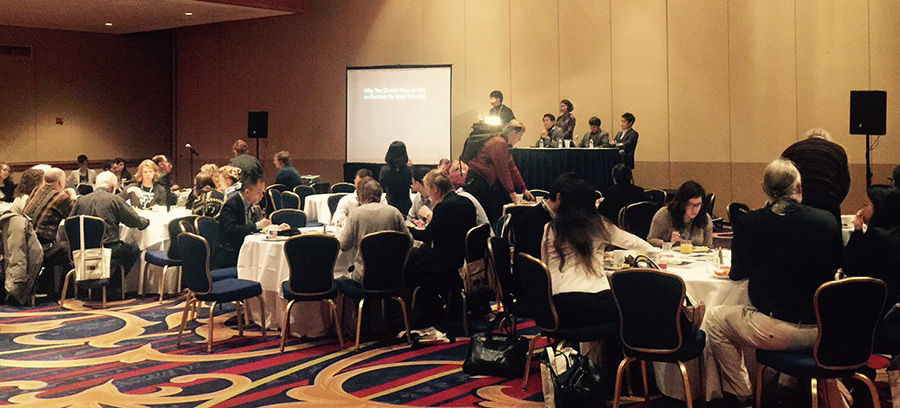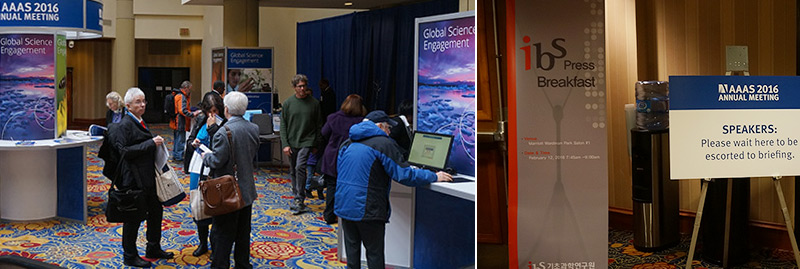주메뉴
- About IBS 연구원소개
-
Research Centers
연구단소개
- Research Outcomes
- Mathematics
- Physics
- Center for Theoretical Physics of the Universe(Particle Theory and Cosmology Group)
- Center for Theoretical Physics of the Universe(Cosmology, Gravity and Astroparticle Physics Group)
- Center for Exotic Nuclear Studies
- Center for Artificial Low Dimensional Electronic Systems
- Center for Underground Physics
- Center for Axion and Precision Physics Research
- Center for Theoretical Physics of Complex Systems
- Center for Quantum Nanoscience
- Center for Van der Waals Quantum Solids
- Chemistry
- Life Sciences
- Earth Science
- Interdisciplinary
- Center for Neuroscience Imaging Research(Neuro Technology Group)
- Center for Neuroscience Imaging Research(Cognitive and Computational Neuroscience Group)
- Center for Algorithmic and Robotized Synthesis
- Center for Genome Engineering
- Center for Nanomedicine
- Center for Biomolecular and Cellular Structure
- Center for 2D Quantum Heterostructures
- Center for Quantum Conversion Research
- Institutes
- Korea Virus Research Institute
- News Center 뉴스 센터
- Career 인재초빙
- Living in Korea IBS School-UST
- IBS School 윤리경영


주메뉴
- About IBS
-
Research Centers
- Research Outcomes
- Mathematics
- Physics
- Center for Theoretical Physics of the Universe(Particle Theory and Cosmology Group)
- Center for Theoretical Physics of the Universe(Cosmology, Gravity and Astroparticle Physics Group)
- Center for Exotic Nuclear Studies
- Center for Artificial Low Dimensional Electronic Systems
- Center for Underground Physics
- Center for Axion and Precision Physics Research
- Center for Theoretical Physics of Complex Systems
- Center for Quantum Nanoscience
- Center for Van der Waals Quantum Solids
- Chemistry
- Life Sciences
- Earth Science
- Interdisciplinary
- Center for Neuroscience Imaging Research(Neuro Technology Group)
- Center for Neuroscience Imaging Research(Cognitive and Computational Neuroscience Group)
- Center for Algorithmic and Robotized Synthesis
- Center for Genome Engineering
- Center for Nanomedicine
- Center for Biomolecular and Cellular Structure
- Center for 2D Quantum Heterostructures
- Center for Quantum Conversion Research
- Institutes
- Korea Virus Research Institute
- News Center
- Career
- Living in Korea
- IBS School
News Center
| Title | IBS Press Breakfast at the 2016 AAAS Annual Meeting in Washington | ||||
|---|---|---|---|---|---|
| Name | Department of Communications | Registration Date | 2016-04-08 | Hits | 3248 |
| att. |
 thumb.jpg
thumb.jpg
|
||||
|
IBS Press Breakfast at the 2016 AAAS Annual Meeting in Washington
IBS held its first IBS Press Breakfast for international journalists, which was held as part of the 2016 American Association for the Advancement of Science (AAAS) Annual Meeting in Washington D.C. on February 12. Three IBS scientists, including Director Taeghwan Hyeon from the Center for Nanoparticle Research, delivered presentations followed by a Q&A session. During the session, James Cornell, president of International Science Writers Association expressed his surprise at the broad spectrum of research fields within IBS Centers, considering that they are quite new research institutions of less than five year’s operation. He said as young research institutions, Centers’ dynamic and exciting R&D programs will make for good news stories. Mr. Cornell expressed his desire to go and see IBS scientists working on the field.
AAAS, as the world’s largest federation of scientific and engineering societies, leads scientific communications and collaborationsFounded in 1848, AAAS affiliates include 252 societies and academies of science, serving more than 10 million members, representing the world’s largest federation of scientific and engineering societies.[1] The AAAS seeks to "advance science, engineering, and innovation throughout the world for the benefit of all people."[2] The AAAS engages in from the planning to operational support regarding science public policy, education and international joint projects in order to strengthen and diversify collaborations among scientists and raise the public awareness of science’s contribution to the wellbeing of humanity. It publishes Science, a major scientific journal and holds an annual meeting every February in one of America’s cities to bring together the world’s leading scientists, journalists, policy makers, science communicators, as well as students for discussions and exchanges on recent research findings.
At the IBS Press Breakfast, three IBS Scientists talked about implantable, wearable healthcare devices, CRISPR Cas 9, and a promising new 2d material, phosphorene.Director Hyeon, Dr Jee-Young An from the Center for Genome Engineering (Director Jin-Soo Kim); and Professor Keun Su Kim from the Center for Artificial Low Dimensional Electronic Systems (Director Han Woong Yeom) gave presentations on their Centers and research to over 100 international journalists from the New York Times, the Wall Street Journal, Science, etc., triggering interest and discussion on IBS. Director Hyeon drew journalists’ attention as he introduced an implantable, wearable healthcare device that functions as both a sensor and drug delivery agent, as well as a multifunctional endoscope system for colon cancer diagnosis and treatment. Dr. An presented one of his Center’s CRISPR Cas 9 research triumphs, DNA free genome editing in plants, as well as the Multiplex Digenome Sequence method to enhance the accuracy and efficiency of genome editing technologies. Professor Kim from the Center for Artificial Low Dimensional Electronic Systems set forth a novel way to control the band gap of a new 2D material, phosphorene, a single atomic layer of black phosphorous. It is deemed as a promising alternative 2d material to graphene, once called the wonder material in electronics. Unlike graphene, phosphorene has a band gap, meaning that it can be readily switched on and off.
Journalism residency program, proactive PR efforts for wider publicityJournalists at the IBS Press Breakfast were impressed and excited about the fact that IBS as a main basic science institution, receives the nation’s concentrated funding and support, which is in stark contrast to the world’s declining investment in basic science. The journalists in particular found noteworthy a broad range of research fields within IBS Centers, compared to predetermined research programs in other countries. During the Q&A session, it was also pointed out that IBS as a new organization needs to have a systemic overseas PR program in place as many in the audience had not heard about IBS before until the IBS Press Breakfast. As one way to obtain a wider publicity around the world, Ron Winslow, Deputy Bureau Chief, health and science within The Wall Street Journal proposed that IBS should open journalism residency program to allow international journalists to have deep understanding and hands-on experience about IBS. Much has been also said about the research programs presented by the three IBS scientists. Steve Connor, Science Correspondent from the British daily the Independent discussed with Director Hyeon the prospects of his Center’s nanotechnology research in collaboration with robotics for therapeutic applications. Richard Stone, Science’s international News Editor brought out lively discussions among the audience by suggesting the possibility of CRISPR Cas9 genome editing technology being misused in massively destructive weapon, as well as the need to prevent such a scenario from becoming a reality. With enthusiastic discussions and exchanges, the IBS Press Breakfast promoted attending journalists’ interest as well as understanding about IBS and also served to highlight the need for IBS to exert more proactive publicity efforts. Dahee Carol Kim |
|||||
| Next | |
|---|---|
| before |
- Content Manager
- Public Relations Team : Yim Ji Yeob 042-878-8173
- Last Update 2023-11-28 14:20















